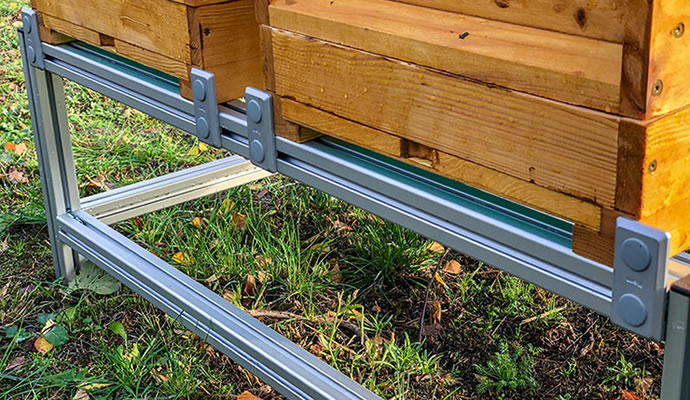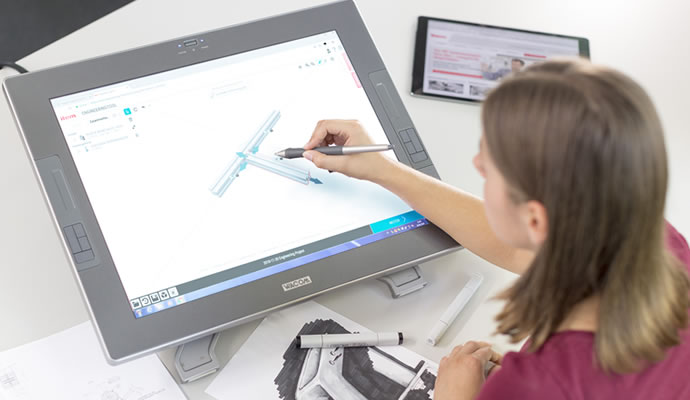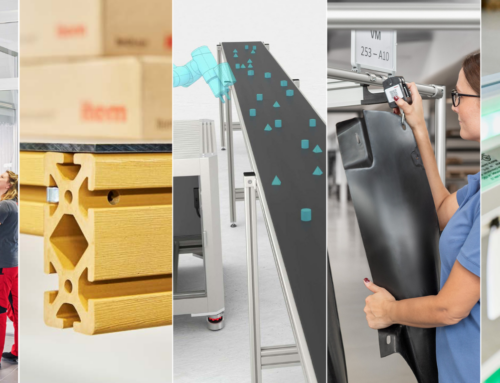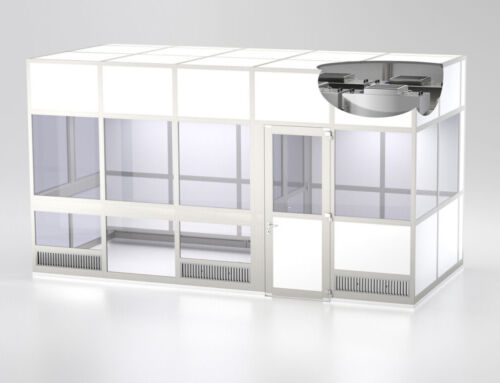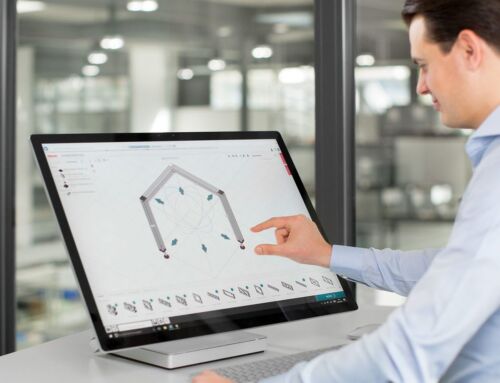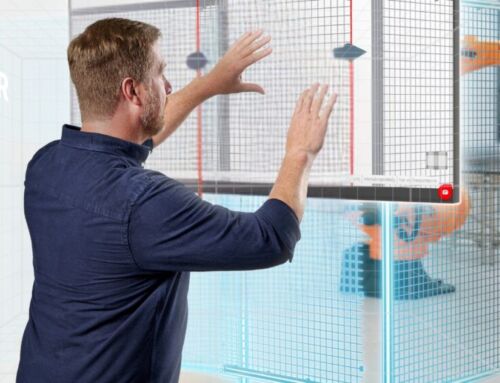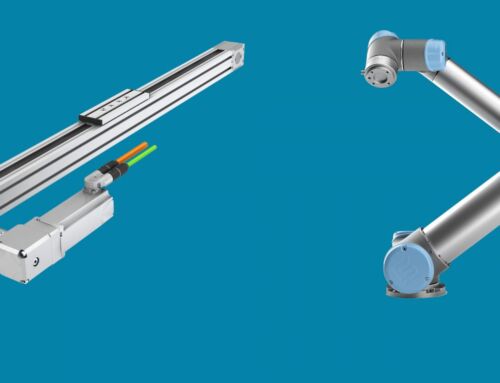Final projects from universities consistently show that the next generation of technical experts are bursting with ideas.
Dominik Eickmann and Dennis Hotze, students working jointly on a Master’s thesis at Bochum University of Applied Sciences’ Drive Technology Laboratory, have designed and built an intralogistics vehicle. Weighing 250 kg and driven by two standard car batteries, the vehicle can transport a maximum of 400 kg and can be charged using the normal electricity grid. Mecanum wheels provide perfect manoeuvrability, and the vehicle is set to be gradually developed further into an autonomous transport vehicle. Working under the supervision of Professor Arno Bergmann, the students have two goals. Firstly, the vehicle must provide actual added value in practical terms, for example by transporting material to an in-house mechanical workshop. Secondly, they aim to lay the groundwork for further research into autonomous driving. In addition to aluminium profiles from our MB Building Kit System, the working group is using components that are generally only associated with video games.
Modularity is a fundamental requirement
The ultimate aim is that, once the vehicle has been further developed by other students, it will be capable of manoeuvring independently across the campus of Bochum University of Applied Sciences and transporting objects. The fact the students aren’t permitted to modify the buildings on campus poses a particular challenge. “Autonomous transport vehicles are frequently guided by markings on the ground or similar elements. However, we don’t want to change the university buildings, so it is all down to the technology on the vehicle,” says Professor Bergmann. Since the sensor technology is continuously being expanded, there was a particular need for a completely modular design, so profile technology from the MB Building Kit System was used for the frame structure and switchbox.
Generally speaking, Bergmann considers our aluminium profiles to be perfect for building (autonomous) transport vehicles. Modularity and simple fasteners ensure rapid adjustment and efficient working. In this case, the cutting service and pre-drilled holes meant the vehicle could be assembled in just five days. Thanks to appropriate CAD data, the students were also able to create a virtual model for the entire design in SolidWorks and also map the inner workings of the transport vehicle. When it came to constructing the switchbox, top-hat rails were used on the rear of the box. Since standard electronics always come with suitable clips, these simply have to be clicked into place to install them directly into the switchbox. “Work on both the electronics and the mechanics went smoothly,” says Bergmann.
Creating an autonomous transport vehicle one step at a time
For now, the vehicle is still controlled using a standard XBOX games console controller. However, the wireless controller is not the only component that originally comes from a games console. The Kinect sensor technology from the XBOX, which is used for motion capture in virtual reality games, was also used for the primary sensors. Since these cameras are capable of both recognising rough outlines and perceiving depth they are the perfect choice. A 2D leader sensor also accurately measures the distance to objects. Some 20 ultrasonic sensors installed around the vehicle detect obstacles in the immediate area, while special sensors for identifying stairs are located on the front and rear so the vehicle can apply the brakes in good time.
For Eickmann and Hotze, the real work on this project began with the system design, which analysed in detail how the autonomous transport vehicle would interact with both its environment and the user. Using this analysis as a basis, they were able to derive the requirements for the vehicle, with a particular emphasis placed on risk analysis. Given that the Drive Technology Laboratory specialises in model-based software development, this approach is not much of a surprise. It involves simulating a system that can then be used directly to generate software. This is standard practice in the automotive industry and the aerospace sector. At the same time, the students and staff in the Laboratory know exactly where to go for crucial support in other fields. “On the whole, mechanics is one of those subjects that we need, but aren’t experts in ourselves. This is where the solutions from item are particularly useful,” says Bergmann.
Do you want to keep up to date on innovative ways that item solutions are being put to use?
Then we have the perfect solution for you. Simply subscribe to the item blog by completing the box at the top right!
